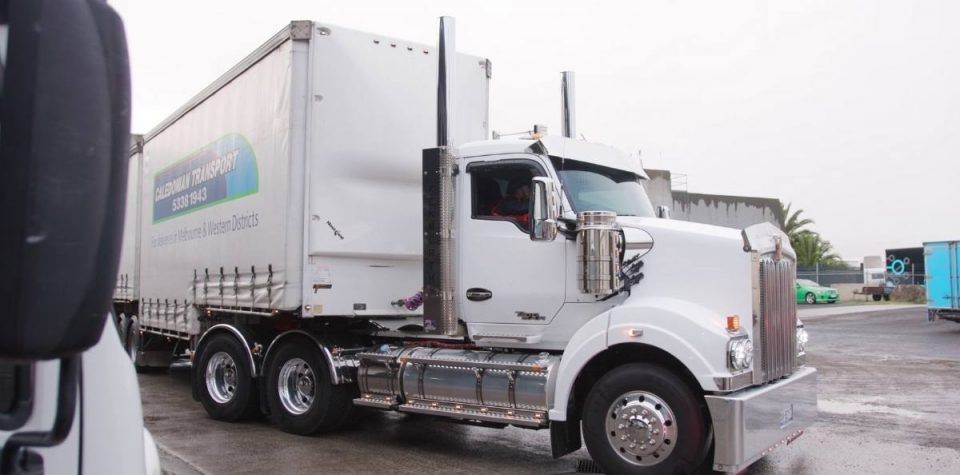Table of Contents:
- Paving the Way: A Brief History of Road-Making in Australia.
- From Collins Street to the Oodnadatta Track: Some Key Facts About Australian Roads
- The Road-Making Process
- Australia's Marvelous Road Network
From the motorways of our big cities to the isolated tracks of our great Outback, roads are the arteries along which the lifeblood of Australian commerce flows.
“Pick up a fast car and burn my name in the road…”
Cold Chisel, Bow River
Australia is a vast and diverse place. Our continent-sized country boasts a road network that appears as extensive and intricate as the lines on an AFL football pitch. Australia’s roads connect cities, towns, and settlements in an elaborate web comprising everything from sleek urban highways to isolated bush tracks that only see a few vehicles in a day.
However, the construction and management of these roads often remain shrouded in mystery. In this blog post, we are going to pick up a fast car and set off to unravel the complexities of Australian roads. So buckle up, road warriors, it’s going to be a bumpy ride!
Paving the Way: A Brief History of Road-Making in Australia.
The history of road-making in Australia is a testament to human perseverance, innovation, and the ever-evolving journey to connect the towns, cities and communities scattered across the vast expanses of the country. From the early days of convict labour to the modern marvels of road construction machinery, Australia's road network has undergone remarkable transformations.
Convicts and the birth of Australia's first roads
The origins of road construction in Australia can be traced back to the nation's convict past. With the arrival of the First Fleet in 1788, the need for basic transportation infrastructure became evident. Convicts were instrumental in building the initial roads, often using rudimentary tools and sheer determination. The convict-built roads, such as the famous Old Great North Road in New South Wales, laid the foundation for future developments.
The Macadam era: innovations in surfacing
As the 19th century progressed, Australia witnessed advancements in road surfacing techniques. The introduction of macadam roads, pioneered by Scottish engineer John Loudon McAdam, marked a significant milestone. Macadam roads consisted of layers of crushed stone, carefully graded to create a smooth, durable surface. These roads provided a substantial improvement over earlier tracks and dirt paths, enhancing the ease of transportation and trade.
The rise of the automobile and asphalt roads
With the advent of the automobile in the early 20th century, Australia's road infrastructure faced new challenges. The demand for smoother and more reliable surfaces grew. This era saw the emergence of asphalt as a preferred road construction material. Asphalt roads, composed of a mixture of aggregates and bitumen, offered enhanced durability and resistance to the wear and tear caused by increasing vehicular traffic.
Modern machinery and road construction
The latter half of the 20th century witnessed a technological revolution in road construction. Powerful machines and sophisticated equipment transformed the road-building process. Gradually, manual labour gave way to mechanised construction methods.
Earthmoving machinery, such as bulldozers and excavators, allowed for more efficient grading and excavation of roadbeds. Pavers and rollers mechanised the process of laying and compacting asphalt, ensuring higher precision and durability.
Today, road construction in Australia stands at the forefront of technological innovation. Computer-aided design and GPS-guided machinery enable engineers and construction crews to plan and execute road projects with unprecedented accuracy. From remote outback tracks to bustling urban highways, modern road-making combines engineering expertise with cutting-edge machinery to create safe, efficient, and enduring transportation networks.
From Collins Street to the Oodnadatta Track: Some Key Facts About Australian Roads
Roads are something we don’t pay much attention to unless they are cluttered with roadworks, jammed up with traffic, rumpled with corrugations or buried in bulldust. Nevertheless, our road network constitutes some impressive engineering feats and startling facts.
From Mudgee to Mendinee
Australia's expansive road network stretches for over 817,000 kilometres. Less than half of these roads are sealed. This can be broken down as follows:
- The continent comprises approximately 355,000 kilometres of sealed roads.
- There are around 257,000 kilometres of gravel or “improved surface” roads.
- Additionally, there are another 205,000 kilometres of dirt roads comprising everything from the back roads of rural areas to long Outback routes like the Tamami Track, the Gunbarrel Highway and many sections of the Savannah Way across the Great Top End.
The Australian Government’s investments in road infrastructure exceed a staggering $15 billion annually, highlighting the significance of this intricate network. New roads are designed with an expected lifespan of around 30 years, while new road bridges are engineered to endure for an impressive 100 years.
Standard Lane Width
The typical lane width on Australian roads stretches to 3.5 meters. Yet, this seemingly uniform dimension can vary significantly based on factors like vehicle type, speed limits, and the type of lane. For instance, the bustling Collins Street in Melbourne features lanes as narrow as 2.3 meters, demanding precision from drivers navigating its crowded streets.
Types of Roads
Australia boasts a diverse range of road types, each with its unique characteristics and challenges.
- Freeways/Motorways/Expressways and Tollways. These arterial roads often feature multiple lanes in each direction, complete with a median strip. Some are equipped with toll booths, a constant source of derision and after-work conversations over beer glasses!
- Highways. The variability in highway design can pose a logistical puzzle for drivers, with lane numbers fluctuating from multiple lanes to just one in each direction. Additionally, some highways remain unsealed and are subject to weather-related restrictions, adding an extra layer of complexity to long-distance travel.
This is a place where Transport Management Software systems come to the fore. By seamlessly coordinating the movement of goods and vehicles, optimising routes, and streamlining operations, these advanced solutions ensure that the intricate logistics of Australia's diverse road network are managed with precision, efficiency, and reliability.
- Minor Roads. Managed by local governments, these roads form the backbone of shorter rural, outback, and urban/suburban routes. A special subset of minor roads, known as "Outback Roads," demands particular attention due to their challenging conditions. Often unsealed and highly dependent on weather, these roads present unique logistical challenges for drivers venturing into the Australian wilderness.
The Road-Making Process
Sealed Australian roads primarily consist of bitumen, serving as the topmost surface layer. However, bitumen is just one piece of the puzzle, representing the road's exterior. Typically, sealed roads incorporate a minimum of two additional layers, strategically designed to provide stability and endurance.
These layers comprise intricate combinations of bitumen, crushed rock, compacted sand, chalk, and larger rocks, each playing a crucial role in the road's structural integrity. The construction process involves meticulously rolling and compacting these layers, creating a robust road capable of withstanding Australia's diverse terrain and climatic conditions.
Rural roads, on the other hand, adapt to local conditions and may comprise materials such as earth, loam, gravel, or bituminous spray seals.
The Marvel of Motorways
In contrast to rural and minor roads, major motorways showcase the pinnacle of road engineering with a multi-layered structure set down according to rigorous engineering standards. Next time you are whizzing along Sydney’s Orbital Network or Melbourne’s Tullamarine freeway, this is what is lying beneath the spot where the rubber meets the road.
- The TOP Layer: Deep-strength asphalt, fortified with a thick layer of asphalt on a cement-stabilized granular sub-base.
- The Middle Layers: A flexible composite, featuring a thick asphalt layer on a lean concrete sub-base, contributes to the road's durability.
- Intermediate Layers: Full-depth asphalt and unbound granular layers, combined with sprayed seal surfacing, enhance the road's resilience.
- The Base Layers: Jointed plain (unreinforced) concrete pavements and jointed reinforced concrete pavements form the base structure, ensuring long-term stability.
- The all-important BOTTOM Layer: Continuously reinforced concrete pavements serve as the foundation, providing a solid underpinning for the entire road.
Australia's Marvelous Road Network
While it's easy to overlook the marvel that is Australia's road network, it remains an indispensable part of our daily lives. Although some roads may appear uneven and seemingly unfit for their purpose, it's essential to recognize that Australia manages one of the world's largest and best-maintained road networks.
Considering the vastness of our country and the relatively sparse population, the remarkable effort invested in maintaining this network ensures that Australians can traverse this diverse landscape with precision and confidence, thanks in part to the sophisticated logistics software that aids drivers in negotiating both well-traveled routes and remote outback tracks.



